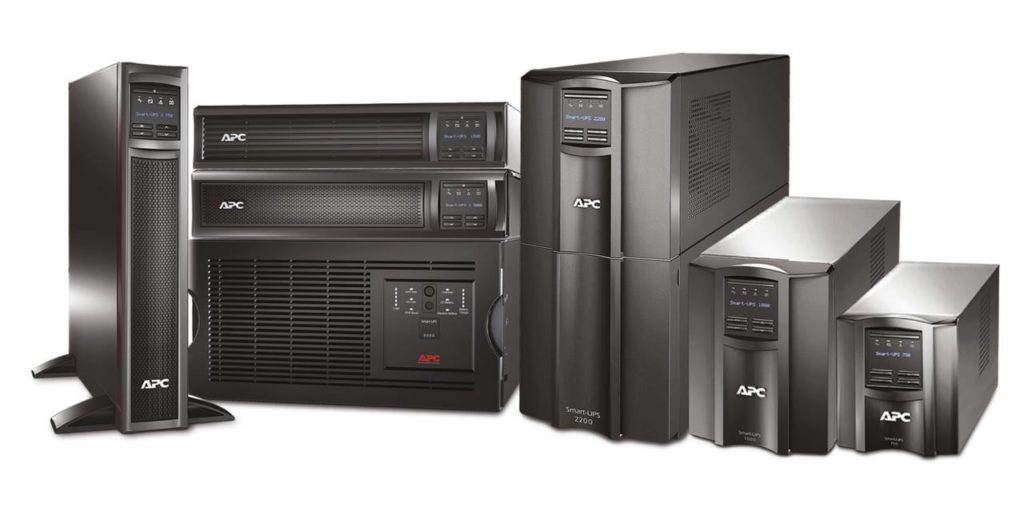Because UPS topologies vary in price and performance, choosing the best UPS depends on your individual needs. The worst nightmare for industrialists and businesses is power outages. This has become one of the most common problems in various industries today. Other typical power quality issues include surges and spikes, overvoltages, Undervoltage (sags), and noise. Such power problems lead to equipment damage, data loss, and other failures.
Providing an uninterruptible backup power system for emergency power is a wise decision. Not only does it prevent power outages, but it also protects expensive equipment from damage of all kinds. There are several considerations when choosing the right UPS for your needs. Visit also: APC distributor in Pakistan
Here are some of them:
Power
Table of Contents
The first thing you should look for is the voltage/ampere/power rating. This is where the capacity of the unit is indicated. A UPS with a lower capacity cannot prevent data loss due to accidental failure. For this reason, the capacity of the UPS must be properly sized.
Also consider additional devices and peripherals such as external hard drives, KVM switches, network storage devices, routers, and switches when calculating power requirements for backup power.
Power outlet capacity
UPSs provide backup power for computers and peripherals in the event of a power outage. Modern UPS models are equipped with surge-protected outlets that protect the connected devices.
It is advisable to calculate the number of sockets required for an emergency power supply, as the main function of the UPS is to provide power. Before buying a UPS, you should always consider the power outlet requirements of your network.
Electrical protection
UPSs with surge protectors not only regulate power but also protect equipment and peripherals from surges. High-quality line filters are also useful for preventing damage from lightning strikes.
A guarantee of equipment protection
When purchasing a UPS, check the manufacturer’s warranty for equipment protection and other applicable limitations. Always register the UPS on the day of installation or recovery will not be possible.
Alarm functions
The UPS is equipped with functions that can notify you of unexpected events – voltage fluctuations, shutdowns, and failures. If certain values such as state of charge, operating temperature, and battery charge exceed thresholds, an alarm will sound.
Network management capability
When selecting a UPS, keep in mind that setting up the unit, status menu and alarm parameters is much easier when the system can be accessed remotely.
Low battery indicator
The least noticed but important feature of the UPS is the low battery indicator. This simple indicator warns the user of a possible battery failure that will no longer provide constant power. Always check the UPS for this feature before purchasing.
Regular checks and maintenance are important to keep the battery and UPS system in good condition. Some companies ensure that all IT systems are available 24 hours a day for regular maintenance to maximize efficiency. Replacing and upgrading parts of the system ensures that the system is always cost-effective and protects the environment.
The importance of finding the right energy storage for your UPS
Uninterruptible power supply (UPS) systems provide important power protection functions, but their main task is to maintain a safe power supply in the event of a power failure or exceeding the limits of the grid. In order for a UPS to perform this task, it needs a reliable source of energy that is securely stored and immediately available when needed. Lead-acid batteries are the most popular choice because they are more environmentally friendly.
UPS power supply options
Kinetic energy is stored mechanically in flywheels. Electricity from the mains drives a motor generator that makes the flywheel rotate, thus storing energy. In the event of a power outage, this energy is converted back into electrical energy and powers the UPS. Flywheels offer only a limited convergence time of 30-45 seconds, which is their biggest problem. That timeframe is insufficient for many companies. They are also not as economical as lead-acid batteries.
A chemical reaction with hydrogen fuel produces electricity by converting hydrogen gas into electrical energy. Hydrogen fuel cells are environmentally friendly because their only waste product is water, but hydrogen fuel cells require energy in the opposite direction. Fuel cells are much more expensive than batteries and carry a greater risk of danger because hydrogen is an explosive gas.
Lithium-ion batteries have great potential to support UPS in the future. Lithium-ion batteries are small in size and weight compared to lead-acid batteries. However, they are expensive compared to available lead-acid products and can explode if overheated. Their small size and high power density make them attractive to electric vehicle developers. Therefore, a lot of time is spent developing safer and cheaper versions.
UPS Battery Maintenance
The first step to maintaining a healthy battery is to maintain the ambient temperature. You can visually inspect the batteries for corrosion and leaks, and tighten the terminals if necessary. UPS batteries should be tested to get a better idea of their condition and future service life. Impedance tests are easy to perform and can predict the end of battery life while still charging.
The available capacity of a battery can be determined with a load bank test. This requires discharging the batteries, which can shorten battery life. This method is a last resort because the critical load must be maintained in some other way while the load bank test is performed. This could mean hiring the UPS and needing other parts of the UPS, such as the APC 1500 battery.
For more details regarding UPS and energy storage for UPS, please visit our website: https://upsonlinestore.com/




